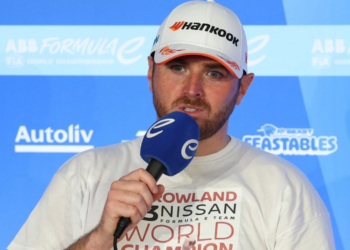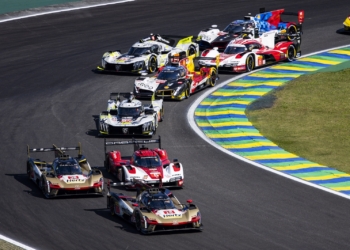Renault Sport F1 will takeover the responsibility of supplying three Formula One teams with engines this season, two of which will also use their KERS system.
They will operate out of Renault’s traditional racing headquarters in Viry-Châtillon in the south of Paris, moving engine operations away from Enstone.
Jean-François Caubet, managing director of Renault Sport:
Q. This will be Renault Sport F1’s first year in F1. What are your thoughts?
JC: It’s really exciting times for Renault. Supplying three different teams, each at the pinnacle of their respective areas of the grid – Red Bull Racing as the world champions, Lotus Renault GP as double world championship winners and Team Lotus as clearly the best newcomers of last season – gives lots of cross marketing opportunities, plus a brilliant stage for the competitive performance of the RS27 engine.
We have got a clear vision of what we want to do within F1. It’s an ambitious yet well-thought out strategy that is very much in line with the main objectives of the Renault brand. There are three main aims now: one, use F1 as a showcase to demonstrate the performance of Renault technology; two, use F1 as a platform to develop and promote technology relevant to road cars, which will become even more important with the proposed 2013 engine regulations; and three, to manage costs effectively.
Q. Will Renault be able to supply three teams effectively this year?
JC: Absolutely, and it’s been very favourably received by the team back in Viry-Châtillon. It is a great strength of the team in that we are able to react to situations very quickly and adapt. Supplying a third team is a challenge but everyone has embraced it and we do not anticipate that the levels of service we provide will diminish in any way. Each team of engineers works separately from the other teams so the management is very simple.
Q. What is the goal for Renault this year within F1?
JC: That’s simple. We want to win with our partners, or to give them the best possible chance of winning.
Rob White, deputy managing director of Renault Sport:
Q. Three teams will use the RS27 in 2011, how will you deal with the extra workload?
RW: It’s great news for the whole team in Viry-Châtillon. Developing engines is a bit like going back to what Renault knows best so supplying a third team gives us the opportunity reinforce our position within the sport and to be in a better position to understand what teams need from engine suppliers in the current climate. Back at the factory it’s been embraced very warmly as it provides new opportunities for us, it allows other team members to go to the track to see how it all works, which in turn brings broader understanding and knowledge to the company.
Q. The blown exhausts have taken on a new importance this year and we’re seeing a lot of development in this area. Is this something Renault has had a hand in developing, and how does it impact on the performance of the engine?
RW: We should clarify that according to the technical regulations, the exhausts are defined as part of the bodywork, and more importantly are designed and manufactured by the teams to take account of the respective car environment. Of course Renault Sport F1 supplies a specification to describe the engine requirements of the exhausts; and we work closely with our teams to develop the solution for each car.
Historically, the exhaust system has been a way to optimise the performance of the engine, but there’s always a compromise between gaining power with the exhausts without affecting the aerodynamics. However last year the balance between gains and loss in this area was redressed as teams used the exhaust gases in conjunction with blown floors to improve aero efficiency. This year, the flow of the exhaust gases has become even more critical with the ban on the double diffusers, so we’re able to revisit the system.
Changing the outlets does impact on the engine performance so we work very closely with each team in the initial design stages. Once the direction has been determined we work together to make sure the team can get the best overall car performance.
Q. Will you be supplying a KERS system to all your partners?
RW: We have the capacity to supply KERS system components to all our partners. The systems tested over the winter with Lotus Renault GP and Red Bull Racing are evolutions of the KERS raced in 2009 by the Renault F1 Team, and tested by Red Bull Racing. At the time, the KERS project was led by the team at Enstone, Lotus Renault’s HQ, and in 2011 Enstone retains overall responsibility for the system. For 2011, the engine team at Viry has taken on a broader role including a larger supply perimeter. We provide a central point of contact for each team for the KERS system on the engine, but its integration into each car and its operation is the responsibility of the respective teams.
We work closely with all concerned, and we’re already well advanced with Lotus Renault GP and Red Bull Racing. We would be happy to do the same for Team Lotus as and when they are ready to run KERS.




